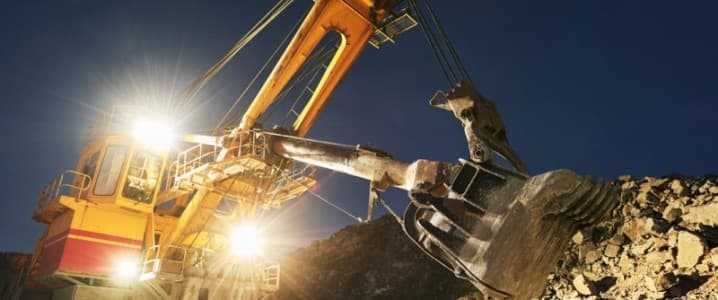
Giant oil and gas trader Mercuria reportedly has begun physical trading in uranium, becoming the first major commodity company to do so, according to Reuters. If officially confirmed, which it has not been, it will mean that Mercuria joins the ranks of Wall Street banker Citibank, Natixis (part of French financial group BPCE) and other deep-pocketed traders who are betting on a nuclear energy boom driven by surging global electricity demand.
The World Nuclear Association has predicted that demand for nuclear fuel will double by 2040 as technology companies scramble for energy to support AI and governments pursue zero-carbon targets.
Switzerland-based Mercuria has been increasingly investing in the metals business in recent years, using profits it raked in from high oil prices a couple of years ago. The uranium market is still small compared to commodities like oil, natural gas, copper, and aluminium, which are the forté of Mercuria, Trafigura, Glencore, and other large commodity traders.
According to UxC, global utility demand for Uranium Oxide Concentrate (U3O8) clocked in at 175 million pounds in 2024, with 47 million pounds traded on the spot markets. Uranium prices have surged in recent years thanks to the global energy crisis. Citi analyst Arkady Gvorkyan has predicted that spot prices will hit $100 per pound in 2026 as miners struggle to keep up with the demand. Prices have pulled back from the all-time high of $106 reached in February 2024.
Source: Y-Charts
The uranium market is experiencing a structural supply deficit, creating potential challenges for nuclear operators. Unlike many commodities, uranium trading usually involves small volumes with specialized participants, making the nuclear fuel susceptible to significant uranium market volatility. Meanwhile, governments across the globe are repositioning nuclear as critical infrastructure rather than transitional tech.
Related: Iraq Expects Kurdistan Oil Exports to Restart This Week
These developments have forced uranium equities to re-rate sharply, with investors now recalibrating exposure to a sector long dismissed as too volatile, too political, or having an uncertain future. While uranium and nuclear stocks have pulled back from recent highs, the sector remains red-hot: the sector’s popular benchmark, VanEck Uranium and Nuclear ETF (NYSEARCA:NLR) has returned 68.3% YTD, more than triple the 19.8% gain by the usually high-flying Technology Select Sector SPDR Fund (NYSEARCA:XLK), 6.4% by the Energy Select Sector SPDR Fund (NYSEARCA:XLE) and 12.5% by the S&P 500.
Uranium and nuclear stocks have easily outpaced the market : shares of advanced fission power plant developer, Oklo Inc. (NYSE:OKLO), have rocketed 459.4% in the year-to-date; Centrus Energy (NYSE:LEU) 357.1%, Energy Fuels Inc. (NYSE:UUUU) 235.9.4%, NuScale Power Corp. (NYSE:SMR) 112.0%, Uranium Energy Corp. (NYSE:UEC) 98.8%, Cameco Corp. (NYSE:CCJ) 66.8%, NANO Nuclear Energy (NASDAQ:NNE) 66.6%, BWX Technologies (NYSE:BWXT) 58.9%, VistraCorp. (NYSE:VST) 47.4% and NexGen Energy (NYSE:NXE) 34.0%.
Shares of California-based Oklo have been on a tear, gaining 1,340% over the past 52 weeks after the company announced a flurry of data center deals. Back in July, Oklo unveiled a partnership with Liberty Energy (NYSE:LBRT)wherein they will develop an integrated power solution for data center applications incorporating Oklo’s Aurora powerhouse with Liberty’s natural gas generation. The power plan will start with Liberty’s natural gas systems delivering quick energy. before shifting to Oklo’s clean nuclear generation over the long-term.
Around the same time, Oklo announced a partnership with Vertiv (NYSE:VRT) that will see them join forces to revolutionize data center operations. “This agreement is about delivering clean power, energy-efficient cooling, and infrastructure solutions purpose-built for AI factories, data centers, and high-density computers,” said Oklo CEO and co-founder Jacob DeWitte. Oklo later revealed that it was selected for three of the U.S. Department of Energy’s reactor pilot projects, part of the DoE’s initiative to modernize and streamline nuclear licensing.
Bank of America has downgraded Centrus’ shares to Neutral from Buy but raised its price target to $285 from $210, citing valuation concerns after the huge runup. Centrus achieved the 900-kilogram production milestone of HALEU for Phase 2, and confirmed a contract extension with the DOE through June 2026. HALEU, or High-Assay Low-Enriched Uranium, is a type of nuclear fuel enriched to between 5% and 20% Uranium-235. This is a higher concentration than the low-enriched uranium (LEU) used in most current reactors (3-5%), but lower than the highly enriched uranium (HEU) used in naval reactors and weapons. HALEU is crucial for the development of advanced nuclear reactors, particularly small modular reactors (SMRs) and microreactors, due to its potential for increased efficiency, smaller reactor designs, and longer refueling intervals.
By Alex Kimani for Oilprice.com
More Top Reads From Oilprice.com
Why Iraq Wants Solar Despite Centuries of Oil Reserves
Petrobras Clears Key Hurdle for Amazon Drilling
Eni Sells 30% in Cote d’Ivoire Oil and Gas Project to Top Trader



